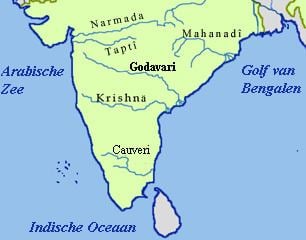Status Operational Number of tracks Main line: 2 | Opened 1891 | |
 | ||
System Main line and some branch lines electrified. Some branch lines: diesel Services Howrah-Nagpur-Mumbai line Track length Main line: 414 km (257 mi)Branch lines:Talbandha-Dhamtari NG: 68 km (42 mi)Durg-Dalli Rajhara: 87 km (54 mi)Gondia-Balaghat-Katangi: 88 km (55 mi)Tumsar Road-Tirodi: 48 km (30 mi)Gondia-Nagbhir-Balharshah: 252 km (157 mi)Nagpur-Nagbhir NG: 110 km (68 mi)Kanhan-Ramtek: 23 km (14 mi)Nagpur-Chhindwara NG: 110 km (68 mi)Chhindwara-Amla: 115 km (71 mi) Terminis Nagpur Junction railway station, Bilaspur Junction railway station | ||
The Bilaspur–Nagpur section is part of the Howrah-Nagpur-Mumbai line and connects Bilaspur in the Indian state of Chhattisgarh and Nagpur in Maharashtra. Part of one of the major trunk lines in the country, it passes through a forested plateau region interspersed with fertile valleys.
Contents
History
The first train in India travelled from Mumbai to Thane on 16 April 1853. By May, 1854, Great Indian Peninsula Railway's Bombay-Thane line was extended to Kalyan. Bhusawal station was set up in 1860 and in 1867 the GIPR branch line was extended to Nagpur.
While the entire Mumbai-Nagpur line was broad gauge, the next part from Nagpur to Rajnandgaon was meter gauge. The Nagpur Chhattisgarh Railway started construction of the 240 km (149 mi) Nagpur-Rajnandgaon section in 1878, after surveys were started in 1871. The Nagpur-Tumsar Road section was opened in April 1880 and the Tumsar Road-Rajnandgaon section in December 1880.
The Howrah–Allahabad–Mumbai line, a joint effort of Great Indian Peninsula Railway and East Indian Railway Company came up in 1870. The Bengal Nagpur Railway was formed in 1887 for the purpose of upgrading the Nagpur Chhattisgarh Railway and then extending it via Bilaspur to Asansol, in order to develop a shorter Howrah-Mumbai route than the one via Allahabad. The Bengal Nagpur Railway main line from Nagpur to Asansol, on the Howrah-Delhi main line, was opened for goods traffic on 1 February 1891.
A narrow gauge branch line was constructed from Raipur to Dhamtari, and from Abhanpur another branch line goes to Rajim. It was opened in 1900. The Raipur-Dhamtari branch line was the first narrow gauge line of Bengal Nagpur Railway. The Gondia-Nagbhir-Nagpur line was opened for traffic in 1908. The Nagbhir-Rajoli line was opened in 1913 and extended up to Chanda. The Bhilai-Dalli Rajhara line mainly for iron ore transportation was opened in 1958. Bhilai Steel Plant was opened in 1959.
Gauge conversion
Work for conversion to broad gauge of the 240 km (149 mi) narrow gauge Gondia-Chanda Fort line started in December 1992. The first phase covering Gondia-Wadsa section was inaugurated on 25 September 1994. The second phase covering the Wadsa-Nagbhir section was opened on 20 February 1997. The fourth phase covering Nagbhir-Chanda Fort section was opened on 13 January 1999 and the Chandafort-Ballarshah section was operated from 2 July 1999.
The Gondia-Balaghat section narrow gauge section was closed from January 2003 for conversion to broad gauge. It was opened for traffic on 6 September 2005. The route from Balaghat to Katangi was converted from narrow gauge to broad gauge in 2010 and the route from Katangi to Tirodi is now under conversion. The Gondia-Jabalpur gauge conversion project is an approved project.
Four gauge conversion projects are on in Nagpur area (including Satpura narrow gauge lines). These are the 147 km (91 mi) long Nagpur-Chhindwara section, the 110 km (68 mi) long Jabalpur-Nainpur section, the 180 km (112 mi) long Chhindwara-Nainpur-Mandla section and the Nainpur-Balaghat section. All these projects are getting delayed because of funds crunch.
Conversion of the Nagpur-Nagbhir section from narrow gauge to broad gauge was sanctioned in 2012-13.
Electrification
The entire main line is electrified but that came in stages. The Bilaspur-Bhilai and Bhilai-Durg sections were electrified in 1970-71, Durg-Paniajob section in 1989-90. The Paniajob-Gondia and Gondia-Bhandara Road sections in 1990-91, Bhandara Road-Tharsa and Tharsa-Nagpur sections in 1991-92.
As of 2012, electrification of the Amla-Chhindwara is expected to start soon.
Speed limits
The entire Howrah-Nagpur-Mumbai line is classified as a "Group A" line which can take speeds up to 160 km/hr.
Railway reorganization
The Bengal Nagpur Railway was nationalized in 1944.Eastern Railway was formed on 14 April 1952 with the portion of East Indian Railway Company east of Mughalsarai and the Bengal Nagpur Railway. In 1955, South Eastern Railway was carved out of Eastern Railway. It comprised lines mostly operated by BNR earlier. Amongst the new zones started in April 2003 were East Coast Railway and South East Central Railway. Both these railways were carved out of South Eastern Railway.
Passenger movement
Bialspur, Raipur, Durg and Nagpur on this line are amongst the top hundred booking stations of Indian Railway.
Narrow gauge rail museum
A Narrow Gauge Rail Museum was inaugurated at Nagpur on 14 December 2002. It was accorded the status at par with National Rail Museum, New Delhi.
